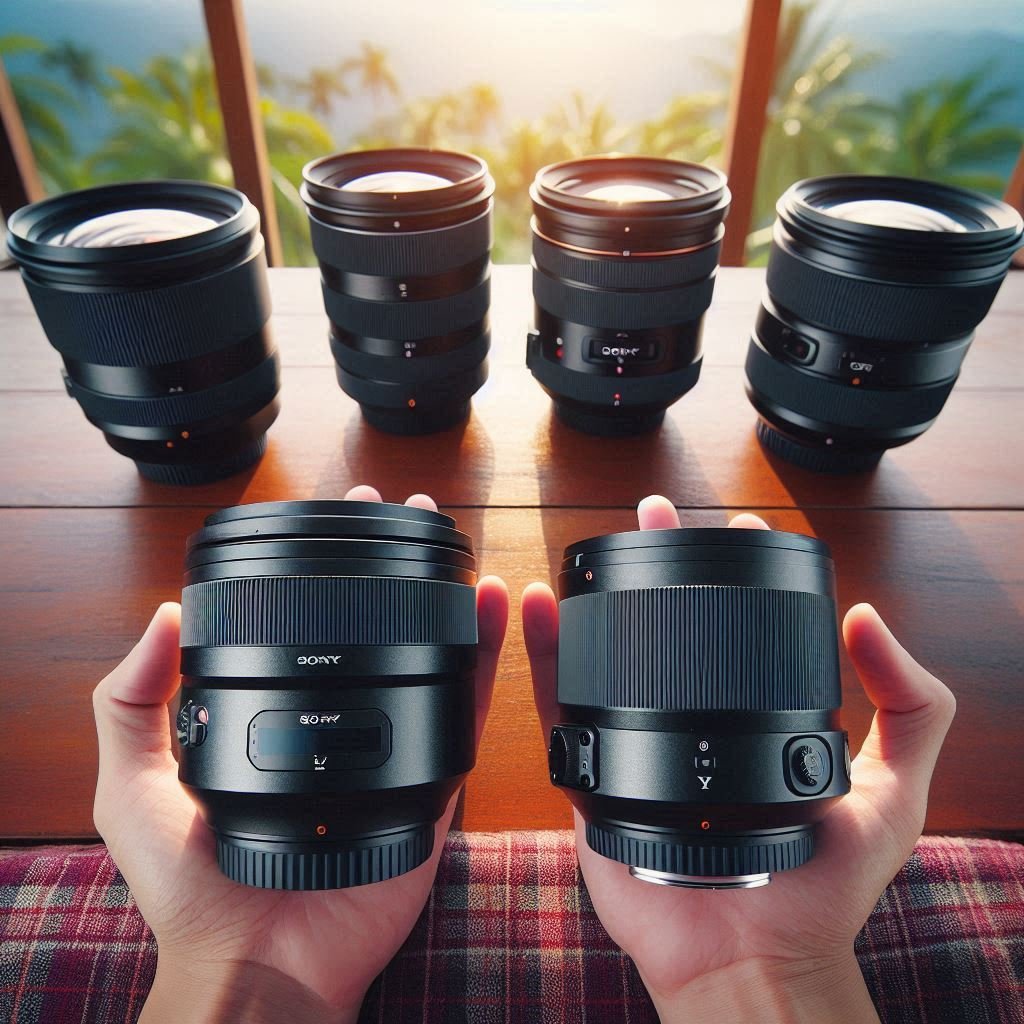Understanding Sony Camera Lenses
When selecting Sony lenses, one of the biggest decisions revolves around E-Mount vs. Full-Frame options. Sony offers a wide range of high-quality lenses, optimized for both APS-C and full-frame mirrorless cameras, ensuring exceptional image quality and versatility.
Whether you’re capturing landscapes, portraits, action shots, or cinematic footage, choosing the right Sony lens directly impacts sharpness, depth, and creative possibilities. In this guide, we’ll break down the differences between E-Mount and Full-Frame Sony lenses, helping you find the best fit for your shooting style.
What Are Sony E-Mount Lenses?
Sony E-Mount lenses are designed for APS-C cameras, offering lightweight designs, affordability, and compact performance. These lenses work seamlessly with Sony APS-C mirrorless models, such as the Sony A6700, A6600, and ZV-E10, delivering excellent results in everyday photography and videography.
Advantages of Sony E-Mount Lenses:
✔ Compact & lightweight, ideal for travel photography.
✔ Budget-friendly compared to full-frame Sony lenses.
✔ Perfect for casual photographers and content creators.
Best E-Mount Sony Lenses:
🔹 Sony E 16-55mm f/2.8 G – Excellent all-around zoom for APS-C cameras.
🔹 Sony E 70-350mm f/4.5-6.3 G OSS – Great telephoto option for wildlife photography.
🔹 Sony E 11mm f/1.8 – Ultra-wide lens for vlogging and cinematic shots.
Sony APS-C Lens Specification Sheet – E-Mount
| Shop on amazon | Focal Length & Aperture | Image Stabilization | Best Camera Compatibility | Key Features | Weight |
|---|---|---|---|---|---|
| 16-55mm f/2.8 | No (Relies on Camera IBIS) | Sony A6600, A6700 | G-series sharpness, fast autofocus | 494g | |
| 70-350mm f/4.5-6.3 | Yes (Optical SteadyShot) | Sony A6400, A6600 | Telephoto zoom, wildlife photography | 625g | |
| 11mm f/1.8 | No | Sony ZV-E10, A6000 Series | Ultra-wide, ideal for vlogging & cinematic shots | 181g |
Compatibility: Works perfectly with Sony APS-C mirrorless cameras, but can also be mounted on full-frame cameras in crop mode.
Table of Contents
What Are Sony Full-Frame Lenses?
Sony Full-Frame lenses are optimized for high-resolution full-frame sensors, delivering superior sharpness, better low-light performance, and professional-level depth. These lenses are perfect for professional photographers and filmmakers, paired with Sony full-frame cameras like the Sony A7 IV, A1, A9 III, and A7R V.
Advantages of Sony Full-Frame Lenses:
✔ Unmatched image quality, ideal for professional shooting.
✔ Superior depth & bokeh, thanks to larger apertures.
✔ Better low-light performance for cinematic photography & video.
Best Full-Frame Sony Lenses:
🔹 Sony FE 24-70mm f/2.8 GM II – Incredible sharpness and versatility.
🔹 Sony FE 50mm f/1.2 GM – Stunning portrait lens with creamy bokeh.
🔹 Sony FE 200-600mm f/5.6-6.3 G OSS – Long-range telephoto zoom for wildlife photography.
Sony Lens Specification Sheet – Full-Frame Mirrorless
| Shop on amazon | Focal Length & Aperture | Image Stabilization | Best Camera Compatibility | Key Features | Weight |
|---|---|---|---|---|---|
| 24-70mm f/2.8 | No (Relies on Camera IBIS) | Sony A7 IV | G Master optics, ultra-sharp image quality | 695g | |
| 50mm f/1.2 | No | Sony A7R V | Premium portrait lens, stunning bokeh | 778g | |
| 200-600mm f/5.6-6.3 | Yes (Optical SteadyShot) | Sony A1 | Extreme telephoto reach, ideal for wildlife & sports | 2115g |
Compatibility: Works natively with Sony’s full-frame cameras, but can also be used on APS-C cameras with a crop factor (1.5x magnification).
E-Mount vs. Full-Frame Sony Camera Lenses: Which Should You Choose?
✅ Choose E-Mount Lenses If:
- You use APS-C Sony cameras (A6700, A6600, ZV-E10).
- You want lightweight and compact lenses for travel.
- You need affordable lenses with excellent quality.
✅ Choose Full-Frame Lenses If:
- You use Sony full-frame mirrorless cameras (A7 IV, A1, A9 III).
- You need professional-grade sharpness and depth.
- You work in low-light environments or cinematic production.
Hybrid Approach: If you plan to upgrade from an APS-C to full-frame Sony camera, you may want to invest in full-frame lenses for long-term flexibility.
Picking the Perfect Sony Camera Lenses
Whether you’re looking for compact and affordable E-Mount lenses or premium full-frame lenses, Sony offers outstanding options for every photography style. If you’re just starting, E-Mount lenses provide incredible quality for APS-C cameras, while full-frame lenses unlock professional-level sharpness and depth.
🔥 Ready to upgrade your kit? Explore the top Sony lenses today! 🚀📸

